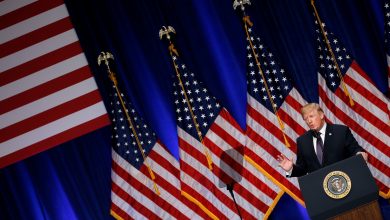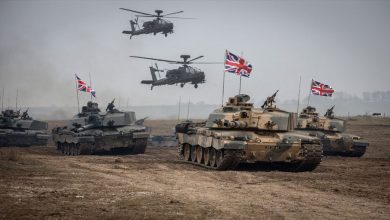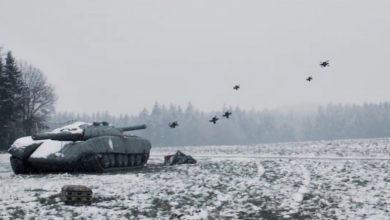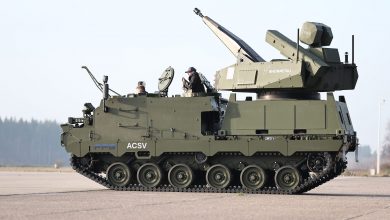Yeni Uzay 2.0: Askeri ve stratejik rekabet kızışıyor

Askeri caydırıcılık ve güçlü savunma için uzayın ülkelerin askeri kapasitelerini “kuvvet çarpanı” kavramı çerçevesinde artırdığı ikinci uzay dönemi; yani “Uzay 2.0” artık devrede.
Geçtiğimiz hafta Brüksel’de düzenlenen NATO Zirvesi’nin sonuç bildirisinde, ortaya çıkan yeni tehdit ve sınamalar karşısında ittifakın siyasi rolünü ve kapasitesini artıracağı ifadelerine yer verildi. Bu yeni tehdit alanlarından biri, 2019’da Londra’da düzenlenen NATO liderler zirvesinde de değinilen ve yeni askeri hareket alanlarından biri olarak tanımlanan uzaydı. Dış uzay ortamında özel sektörün de dâhil olmasıyla aktörlerin sayısının artması, bu alanda yaşanabilecek bir savaşın mahiyetinin yeni nesil silahlarla değiştirilebilir olması, dünyada hegemon devlet olmak için uzayda hâkimiyetin birincil koşul sayılması ve gelişmiş ülkelerin savunma ve caydırıcılık faaliyetlerini uzay koşullarında geliştirmesiyle uzay, stratejik açıdan yeniden ön plana çıkan bir alan haline geldi.
ABD, Rusya, Çin ve Fransa’nın uzay komutanlıkları kurarak uzay savaş doktrinleri oluşturmaları ve bu amaçla tesis edilen birimlere ciddi sayıda askeri personel tayin etmeleri ve geliştirdikleri yeni savunma silah sistemleri bu yeni rekabetin iyice kurumsal bir niteliğe kavuştuğunu gösteriyor. Uzayda ülkelerin sahip oldukları sivil ve askeri uydulara yönelik saldırılar artık savaş sebebi sayılıyor. Son NATO toplantısında da 30 ülkenin herhangi birine böyle bir saldırı gerçekleşmesi durumunda diğer ülkelerin de ittifakın beşinci maddesini işletileceği kararı sonuç bildirisine eklendi. İttifakın içinde uzayla ilgili yeni bir birim oluşturulurken, 2022’de kabul edilecek “NATO 2030 Yeni Bir Çağ İçin Birliktelik” vizyon belgesi kapsamında uzayın da geniş şekilde yer alacağı gösterilmiş oldu.
2021 yılı içinde yaklaşık 40’a yakın uzay cismini fırlatacak olan Çin, ABD’nin hemen ardından kendi uzay aracını Mars’a göndererek ABD ile aynı anda aynı misyonlar için faaliyet gösteriyor. Tüm bu uzay çalışmalarında Rusya’nın desteğinin de olduğunu söylemek yanlış olmaz.
Uzay 2.0 ve Çin tehdidi
Özellikle alçak yörünge bölgesiyle dış uzay, dünyanın uydusu ay ve diğer yakın gezegenler, uzaya erişim imkânına sahip ülkeler nezdinde kendi ulusal güçlerini artırmada önemli bir stratejik alan olarak yeniden önem kazandı. Askeri caydırıcılık ve güçlü savunma için uzayın ülkelerin askeri kapasitelerini “kuvvet çarpanı” kavramı çerçevesinde artırdığı ikinci uzay dönemi; yani “Uzay 2.0” artık devrede. İlk olarak Soğuk Savaşın nükleer silahlanma yarışında, Sovyetler Birliği’nin yapay uydular göndererek ve gerçekleştirdiği insanlı alçak yörünge seyahatleri ile uzayda ABD’den çok önce güç erişimine kavuşması, ABD hükümetinin ulusal savunmasında ciddi bir korku ve tehdit yaratmıştı. Apollo projesi ile Ay’a ayak basılması ABD’nin uzayda güç dengesini eşitlerken, nükleer füzelerin uzay atmosferine çıktığı anda imha edilmesini sağlayabilecek hava savunma silah sistemlerinin de geliştirilmesini sağladı. Soğuk Savaşın bitmesiyle durgunluk dönemi yaşayan uzay çalışmaları, 2003 yılında Çin’in ilk insanlı uzay uçuşunu yapmasıyla yeniden hareketlenmeye başladı. Amerikan özel sektör girişimcilerinin de uzay misyonlarına dâhil olması, Avrupa Uzay Ajansı (ESA) dışında İsrail, Hindistan, Birleşik Arap Emirlikleri (BAE), Güney Kore, Yeni Zelanda, Avustralya ve Japonya’nın uzay çalışmalarıyla çok aktörlü bir nitelik kazandı. Uzay 2.0 ortamında bu kez Rusya’ya ek olarak Çin de ABD ve müttefikleri tarafından yeni bir tehdit olarak görülmeye başladı.
NATO liderler zirvesi sonuç bildirisinde, Çin’in savaşın doğasını değiştirmeye sahip yeni yıkıcı teknolojilere yatırım yaptığına, ekonomik ve askeri silahlanma alanındaki yükselişine ve dahası ittifakın uluslararası alandaki güvenliğine meydan okuduğuna yer verildi. Yeni silahlar ve savaş teknolojilerinin uzay alanı için geliştirilmiş olması en kritik konu olarak öne çıkıyor. Çin’in küresel güç olma çalışmalarının altında barışçıl maksatların yatmadığı yönündeki ifadeler de bu kapsamdaki tehdit algısını yansıtıyor.
2030 yılında yapay zekâ alanında dünya lideri olmayı planlayan Çin, bu teknolojiye dayalı otonom silah sistemlerini, ilaveten yönlendirilmiş elektromanyetik spektrum silahlarını, 5G bağlantılı yeni teknolojileri ve kuantum ışınlanma ve biyo-teknoloji alanındaki yeni uygulamaları sürekli geliştirmekte. Çin ordusu 2015 yılında büyük veri ve yapay zekâya dayalı otonom ve yönlendirilmiş enerji silah sistemlerini konu edinen ve yeni bir savaş konseptinin üstünde duran “Işık Savaşı” isimli bir kitap yayınladı. Ayın karanlık yüzüne ilk inişi gerçekleştiren Çin’in otonom robotu ay yüzeyinden materyal toplarken bir yandan da elektromanyetik deneyler yaptı. Işık harbine uygun şekilde testleri devam ettiren Çin’in, uydulara yerleştirilebilecek otonom, yönlendirilmiş elektromanyetik spektrum bazlı silahlar (lazer ve yüksek güçlü mikro dalga silahları) ile bu yeni savaş konseptini 2030’a kadar hayata geçirmeyi planladığı ileri sürülebilir. Bu ışık harbi konsepti, öncelikle hipersonik füzeler ve kıtalararası balistik füzeleri hızlı şekilde imha eden lazer yapıda bir hava savunma sistemi olarak düşünüldü.
Özellikle alçak yörünge bölgesiyle dış uzay, dünyanın uydusu ay ve diğer yakın gezegenler, uzaya erişim imkânına sahip ülkeler nezdinde kendi ulusal güçlerini artırmada önemli bir stratejik alan olarak yeniden önem kazandı. Askeri caydırıcılık ve güçlü savunma için uzayın ülkelerin askeri kapasitelerini “kuvvet çarpanı” kavramı çerçevesinde artırdığı ikinci uzay dönemi; yani “Uzay 2.0” artık devrede.
Uluslararası uzay hukuku uzayda yürütülecek faaliyetlerde barışçıl amaçları zorunlu kılarken, Çin 2007 yılında rakip ülkelerin askeri uydularını hedef alan bir tatbikat gerçekleştirdi. Dünyadan kendi meteoroloji uydusunu vurarak askeri kapasitesini ve uydu savaşlarına hazırlıklı olduğunu gösterdi. Ayrıca uzayda yer alan uydu ve silah sistemlerinin ana yapısının bilişim altyapısı ile oluşturulduğu düşünülerse siber tehditler de uzay alanına eklemlenmekte, yapay zekâ teknolojisinde lider konuma gelmiş bir ülkenin siber saldırı silahlarının da yıkıcı olacağı düşünülmekte. Çin’in uzayda da liderliğe oynadığı dikkate alınırsa uzaydaki tüm uyduları devre dışı bırakabilecek siber yazılım sistemleri geliştirebilme ihtimali de gözden uzak tutulmuyor. Uydu savar silah sistemleri, özellikle uzay tabanlı lazer silah sistemleri, Çin’in en önem verdiği yeni nesil silahlardan.
Çin’in yeni savunma stratejilerinin yer aldığı 2019 tarihli “Beyaz Kitap”ta dış uzay alanı, uluslararası stratejik rekabette kritik bir alan olarak tanımlandı ve dış uzayda güvenliğin sağlanması ulusal ve sosyal kalkınma için öncelikli bir konu olarak belirtildi. Çin lideri Şi Cinping ordudan uzayda yeni doktrinler, kavramlar geliştirilmesini ve dünya yörüngesinde dönen uydular için Uzay Alanı Farkındalığı oluşturulmasını istedi. Çin 2024’te yapımı bitecek olan ve alçak dünya yörüngesine yerleşecek kalıcı Tiangong uzay istasyonunun modüllerini, son gönderdiği üç taykonot ile geliştirmeye devam ediyor. Bu uzay istasyonun 10 metreye kadar uzanan ve 20 tonluk bir uzay objesini kavrayabilecek devasa robotik kolları bulunuyor. Füze ile vurma, lazer ile yok etme, uydu kör etme, siber saldırı ile devre dışı bırakma dışında diğer ülkelerin uydularını robot kollarla ele geçirebilme tehdidi ABD tarafından dile getirildi ve Çin’in alçak yörüngedeki modüler uzay istasyonu askeri bir üs şeklinde yorumlanarak bu yönden tehlikeli görüldüğü ifade edildi.
Uzay ittifakları
Düşük yerçekimi ortamında tıbbi ve biyolojik virüs deneylerinin yapılabildiği T şeklindeki uzay istasyonu, Çin’in bu alandaki çalışmalarını sürdüreceği yeni laboratuvar ortamı olarak düşünülmekte. Çin’in Ay misyonu kapsamında istasyon içerisinde yaşam destek üniteleri ve bitki ve su atık sistemleri de yer alacak. Uluslararası Uzay İstasyonu 2024’te fiilen sona erdirileceğinden Çin, kendi uzay istasyonu ile bu misyonun yerini almak istiyor. Nitekim inşası devam eden kendi uluslararası uzay istasyonu çalışmalarını şeffaflaştırmak amacıyla Birleşmiş Milletler (BM) Dış Uzay Ofisi ile birlikte bu istasyonda bilimsel çalışma yapmak isteyen ülkelere 2018’de çağrıda bulunmuştu. Seçilen ülkeler Rusya, Belçika, Fransa, Almanya, Hindistan, İtalya, Japonya, Kenya, Hollanda, Norveç, Meksika, Polonya, Peru, Suudi Arabistan, İspanya ve İsviçre uzay tıbbı, biyo-teknoloji, düşük yerçekimi, uzay radyasyonu etkileri ve uzayda bitki yetiştirme konularında bu istasyonda yer alabilecekler. Kapasitesi sürekli artırabilecek şekilde dizayn edilen istasyonda birleşme üniteleri (bağlantı limanları) farklı uzay araçları ile fırlatılan modüllerin eklemlenmesine uygun şekilde tasarlandı.
Dış uzay ortamında özel sektörün de dâhil olmasıyla aktörlerin sayısının artması, bu alanda yaşanabilecek bir savaşın mahiyetinin yeni nesil silahlarla değiştirilebilir olması, dünyada hegemon devlet olmak için uzayda hâkimiyetin birincil koşul sayılması ve gelişmiş ülkelerin savunma ve caydırıcılık faaliyetlerini uzay koşullarında geliştirmesiyle uzay, stratejik açıdan yeniden ön plana çıkan bir alan haline geldi.
Çin, uzay istasyonu dışında, Hubble teleskobunun benzeri olan ve ondan 300 kat daha iyi görüntü kalitesine sahip modüler Xuntion (Cennetleri Araştıran) teleskobunu, dünyaya yakın asteroitleri tespit etmek, Çin uzay madenciliği faaliyetlerini desteklemek için kullanmak ve diğer gezegen çalışmalarına katkıda bulunmak için alçak yörüngede kendi uzay istasyonuna yakın şekilde konuşlandıracak. Teleskop mekanizmanın yeni geliştirilen uzay tabanlı lazer silahların düşman uydularını vurması için hedef noktasını gösterme bakımından da önemli bir rolü olacak. Yer tabanlı radar hedef uyduları tespit ederken, konuşlandırılabilen membran teleskop lazerin hedefi vuruşuna odaklanabiliyor. Askerî açıdan bakınca, Çin’in, muhtemel bir ışık harbini destekleyici sistemleri alçak yörüngeye yerleştirmekte olduğu varsayılabilir.
2021 yılı içinde yaklaşık 40’a yakın uzay cismini fırlatacak olan Çin, ABD’nin hemen ardından kendi uzay aracını Mars’a göndererek ABD ile aynı anda aynı misyonlar için faaliyet gösteriyor. Tüm bu uzay çalışmalarında Rusya’nın desteğinin de olduğunu söylemek yanlış olmaz. Anti-uydu savaş sistemi Ruslar tarafından Soğuk Savaş’ta ABD’ye karşı düşünülmüştü. İlk Mir uzay istasyonunu yapan Ruslar, Çinlileri de bu alanda istasyon sahibi olmaları için teşvik etmişti; iki ülke Mart 2021’de Ay üzerinde ya da yörüngesinde ortak bir Ay uzay üssü kurmayı kararlaştırdılar. NATO tarafından potansiyel tehdit addedilen Rusya güçlü nükleer silah kapasitesi ve uzay deneyimi ile Çin’in yanında yer alarak bir güç dengesi oluşturmuş görünüyor. Asya Pasifik’teki Quad ittifakı ülkeleri Japonya, Güney Kore, Hindistan ve Avustralya’nın uzay çalışmaları da bu kapsamda Çin’e karşı ABD tarafından destekleniyor.
“Türk Uzay Kuvvetleri”
Uzayda savaş gücü anlamında rakibinin gerisinde kalan Amerikan hükümeti uluslararası hukuku ön plana çıkararak, rakiplerini engellemeye çalışan bir strateji izliyor. Sovyetler Birliği’nin Sputnik’i 1957’de uzaya fırlatmasıyla, insanlı uzay uçuşlarının ardından 1967 yılında Dış Uzay Anlaşması imzalanmıştı. Bu stratejiye benzer bir şekilde günümüzde ABD ile sekiz ülke arasında imzalanan Artemis Ay Anlaşması, Çin ve Rusya’nın bu uydu üzerindeki faaliyetlerini durdurma yönünde ilk adım olarak görülebilir. NATO da uzayın askeri anlamda silahlanmaması için uluslararası anlaşmalara bağlı kalacağını bildirisine ekleyerek rakiplerinin askeri faaliyetlerinin karşılıksız kalmayacağını ortaya koydu. Öte yandan, Çin’in bugüne kadar gönderdiği iki uzay aracının hızla düşerek dünya yüzeyinde tehdit yaratması da ABD tarafından Çin’in bu faaliyetleri karşısında dünya kamuoyunu yanına çekmek için fırsat olarak kullanılıyor.
NATO bünyesi içinde çalışmalara başlayacak olan uzay birimine katkı sağlama konusunda Türk Silahlı Kuvvetleri (TSK) bünyesinde de Eskişehir’de kurulması önceden planlanmış olan ve örgütlenme yapısı belirlenen Türk Uzay Kuvvetleri’nin de aktif hale getirilmesine karar verildi. Uzayda bulunan uydularımızın güvenliğini yakından takip edecek olan yeni kuvvet alanı, Hava Kuvvetleri’nden ayrı bir birim olacak. Uzaydaki yeni misyon görevlerine NATO kapsamında hazırlık yapacak Türk Uzay Kuvvetleri’nin ittifak bünyesinde geliştirilecek uzay savunma ve silah sistemleri konusunda da ordunun gelişmesine katkı sunacağı öngörülüyor. Türkiye’nin de yeni stratejik tehdit alanlarına hızlıca entegre olabilmesi böylece tamamlanacaktır.
Kaynak: AA – Uluslararası güvenlik, ulusal savunma ve yeni teknolojiler, terörizm ve uzay üzerine çalışmaları bulunan Doç. Dr. A. İnci Sökmen Alaca İstanbul Arel Üniversitesi Uluslararası İlişkiler İngilizce Bölümü öğretim görevlisidir





